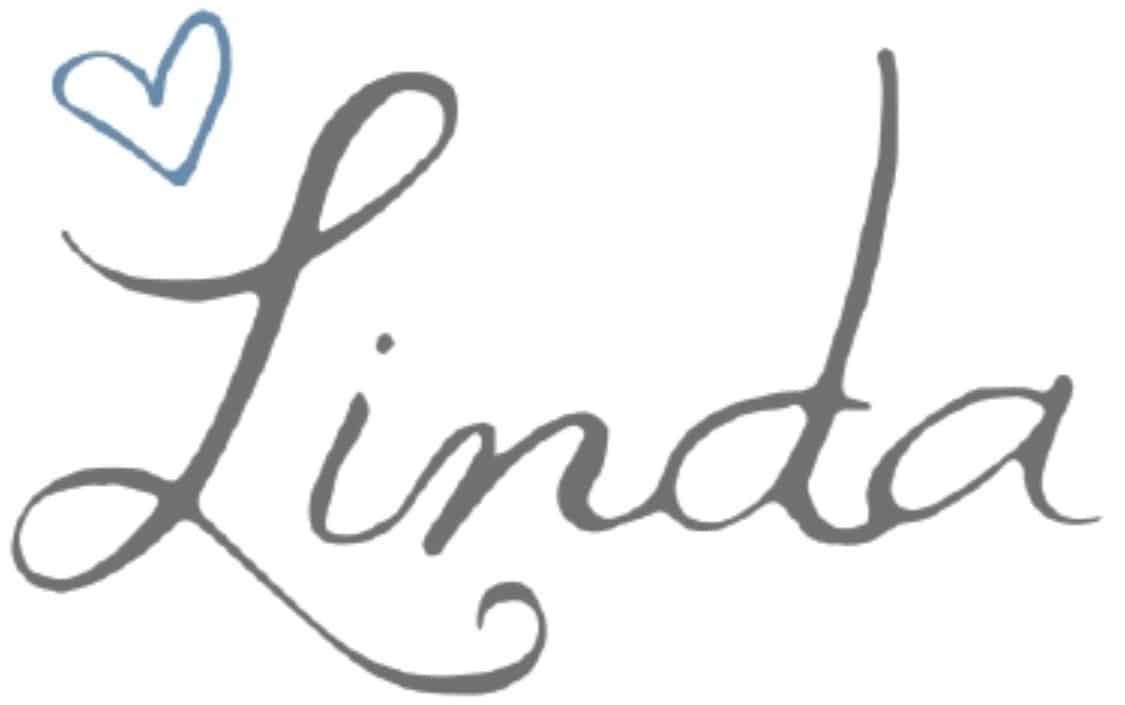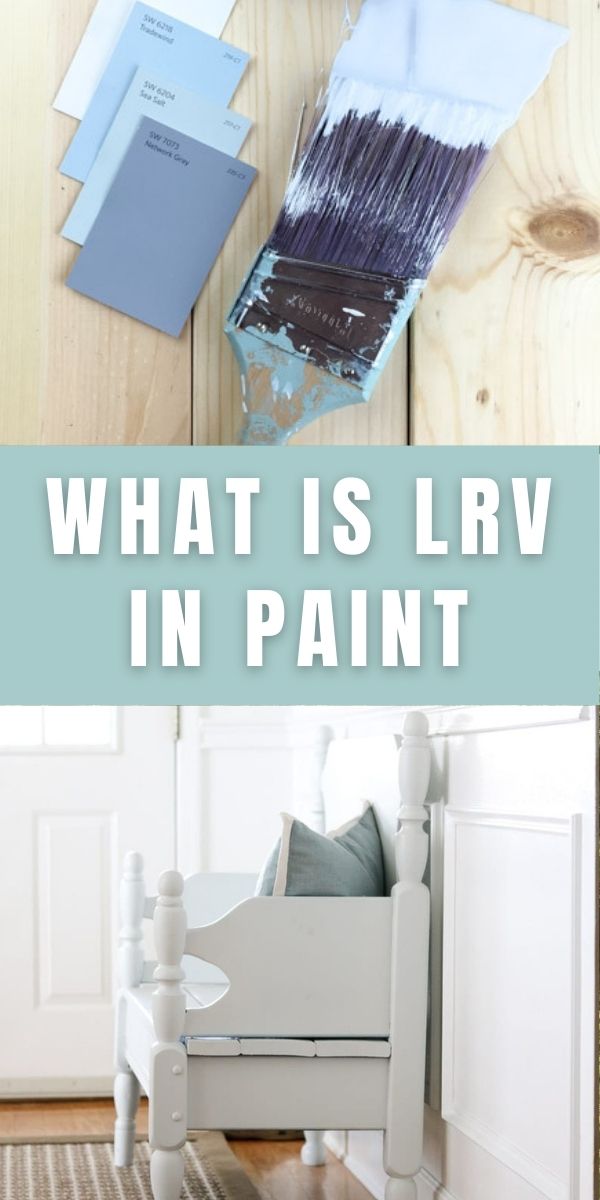LRV, or Light Reflectance Value, is a key factor to consider when choosing paint for your home or business. This measure of the amount of visible and usable light reflected by a surface can greatly impact the look and feel of a space.
Understanding LRV can help you make informed decisions about color and paint finishes and ensure that your chosen paint will meet the lighting needs of your environment.
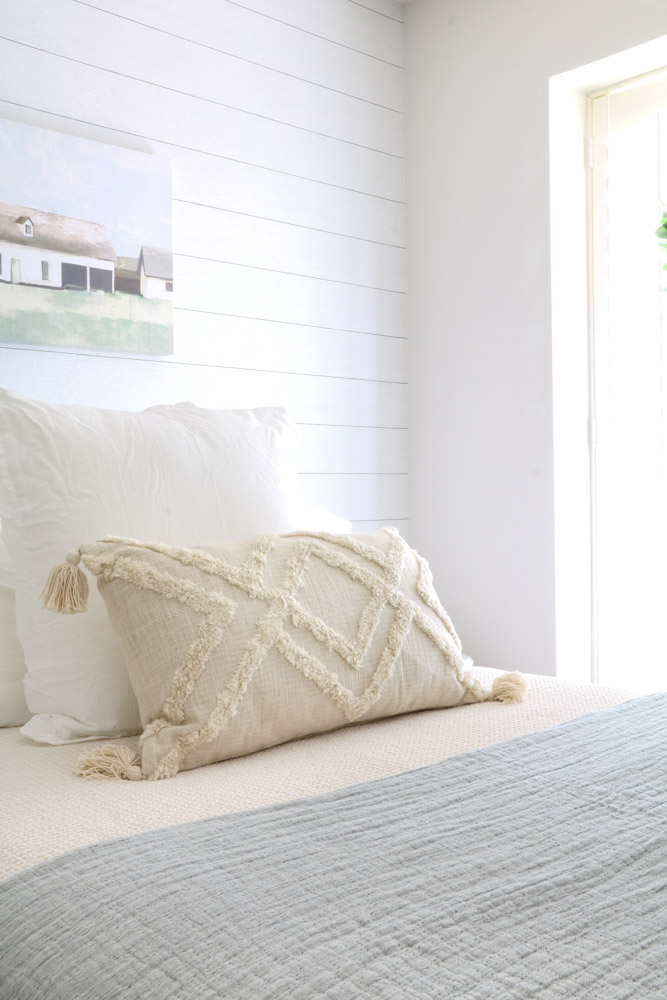
After many years of picking paint colors for clients, it wasn't until later in my career that I started taking note of LRV in paint listed by paint brands on their websites. Until then, I used the knowledge I learned in interior design school to tell the value of a color and how it would reflect in a room.
But once I started taking note of the LRV listed by brands, I found selecting paint colors easier. And I know it will help you too when selecting a paint color.
Today let's talk about what is LRV in paint and how you can use it to pick a paint color for your interior or exterior.
LRV in Paint FAQs:
What is LRV in Paint?
LRV stands for Light Reflectance Value, and it measures the amount of visible and usable light reflected from a surface when illuminated by a light source. Different colors will have different LRVs.
In the context of paint, the LRV of a paint color is used to describe the degree of lightness or darkness of a particular color. It is a helpful metric to consider when selecting paint colors, as it can impact a room's perceived brightness, mood, and energy efficiency.
Does Higher LRV mean Brighter?
The LRV scale values range from 0 (black) to 100 (white). The brightest whites have high light reflectance values. When you have low light reflectance values paint, the paint is darker in color.
Using LRV in Paint
Now that you know what LRV is let's talk about the numbers and how to use them.
In paint, LRV is used to determine the brightness of a color and how it will look in a given space. Paints with a higher LRV are light colors and will reflect more light, making smaller rooms feel brighter and more open. Conversely, paints with a lower LRV will absorb more light, creating a darker and more intimate atmosphere.
How LRV can affect a room's appearance and mood
LRV is an important consideration when choosing paint colors, especially in rooms without much natural light that are small and have low ceilings. For example, in my small guest bedroom with low ceilings of eight feet and one small window, a high LRV paint color will make the room feel larger and brighter.
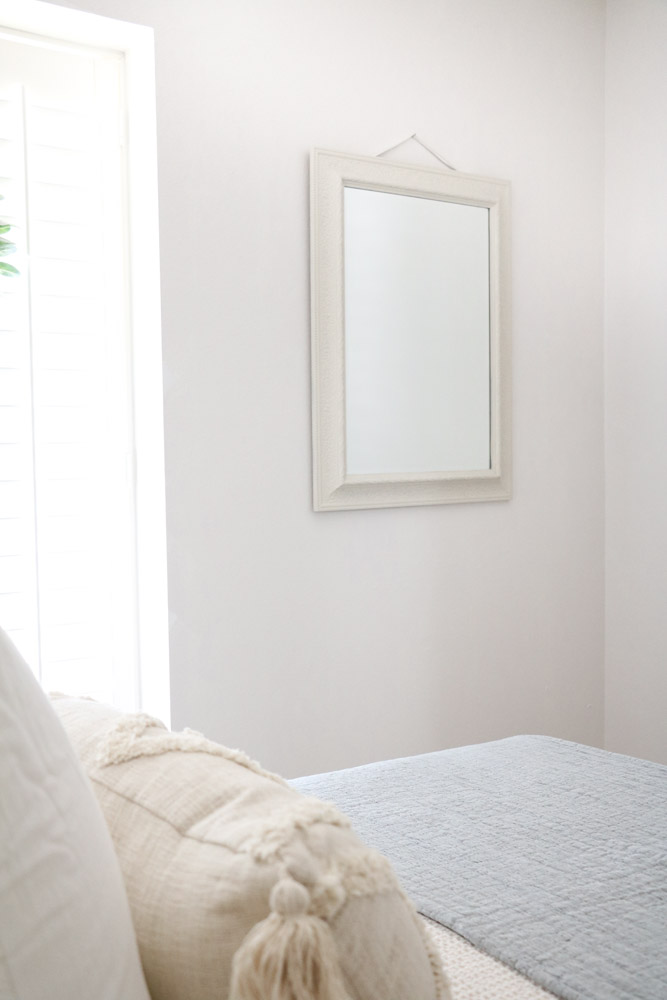
White colors have a high LRV, so we used Behr Ultra Pure White with an LRV of 94. Anything over 90 will read white. I painted the walls and trim the same color, another designer trick to make this bright room feel larger.
However, if your room is large with a flood of natural lighting, then using a lower LRV will absorb some of the light and make the space feel cozier. Often, a media room or home theatres are painted colors with low LRV colors, so the room is nice and dark for the perfect movie-watching setting.
LRV and Accessibility
LRV, or Light Reflectance Value, is an essential factor in accessibility as it measures the amount of light reflected from a surface. This is particularly useful for individuals with visual impairments, as it can help them identify contrasts between surfaces and navigate their surroundings.
For example, darker colors on a dark background may be difficult for someone with low vision to distinguish. A high contrast between a surface and its surroundings can make it easier for them to perceive.
LRV can also aid in creating accessible signage and wayfinding systems, ensuring that everyone can navigate a space safely and effectively.
Now that you know this, I bet you will notice the lines drawn on roads and signs and how the high LRV and contrast in color of yellow, black, and white are used to make reading and walking safer.
Think about it! Have you ever been in a home where people keep tripping over a step or stumbling? Think back to the flooring.
Choosing the Right LRV for Accessibility
In my sister's old house, her main living area had dark wood walls, low LRV, and there is one step down from the entryway to the living room and the flooring is the same color, medium to dark wood, on both levels.
So many people have stumbled on that one step. Darker rooms decorated with dark colors are not ideal for accessibility.
Here are some options to fix this problem if you have a dark room: walls with a higher LRV, meaning lighter colors, lighter flooring, high LRV, or different flooring from one step to another, or adding a rug that contrasts. This help solves the problem of people stumbling over the step.
Also, consider a high LRV to help those visually impaired or with low vision. By choosing paint colors, flooring, and other surfaces with a higher LRV number, can make it easier for those with visual impairments to navigate a space.
Additionally, using contrasting colors with different LRVs can help highlight important features. This will make doorways, stairs, and restrooms more visible and easier to locate. Overall, considering LRV is important to creating a welcoming and inclusive environment.
LRV and Design
In the world of designing homes, LRV, Light Reflectance Value or sometimes called Light Reflective Value, is vital to good interiors and exteriors. Understanding the value of a color's lightness and darkness can help create a functional space, cozy room, or aesthetically pleasing environment.
Interior designers use LRV in other elements and not just paint colors. Remember, LRV is a range from white to black and every shade in between. Here is an example of using LRV to decorate a bookcase.
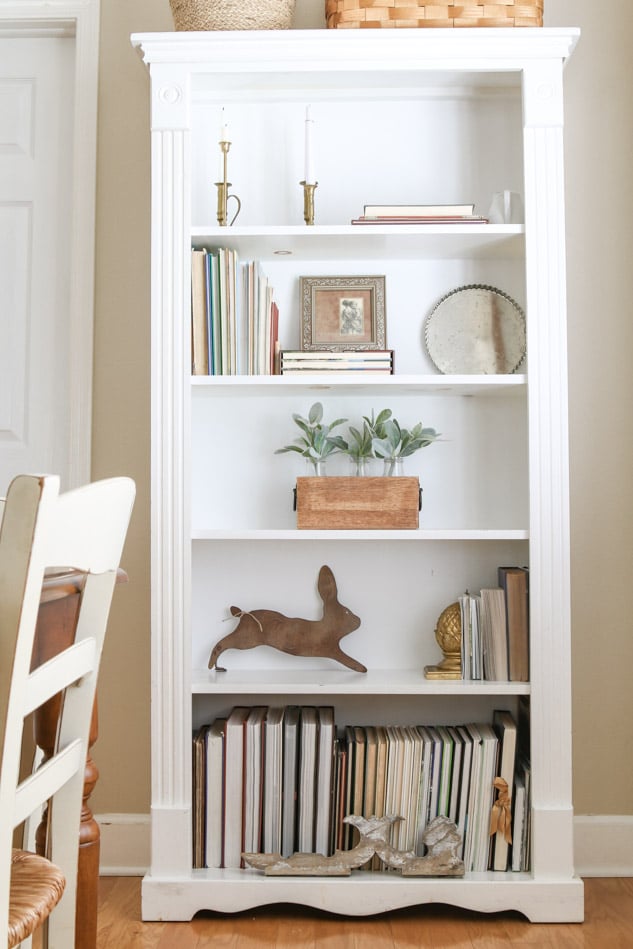
The bookcase is painted Extra White by Sherwin Williams with an LRV of 86. A white/white color on a bookcase will make seeing all the decor inside much easier. See how it reflects a lot of light?
What if you use a dark color for your bookcase? Make sure you have good lighting in the room, and use accessories with lighter values to contrast with the dark nooks.
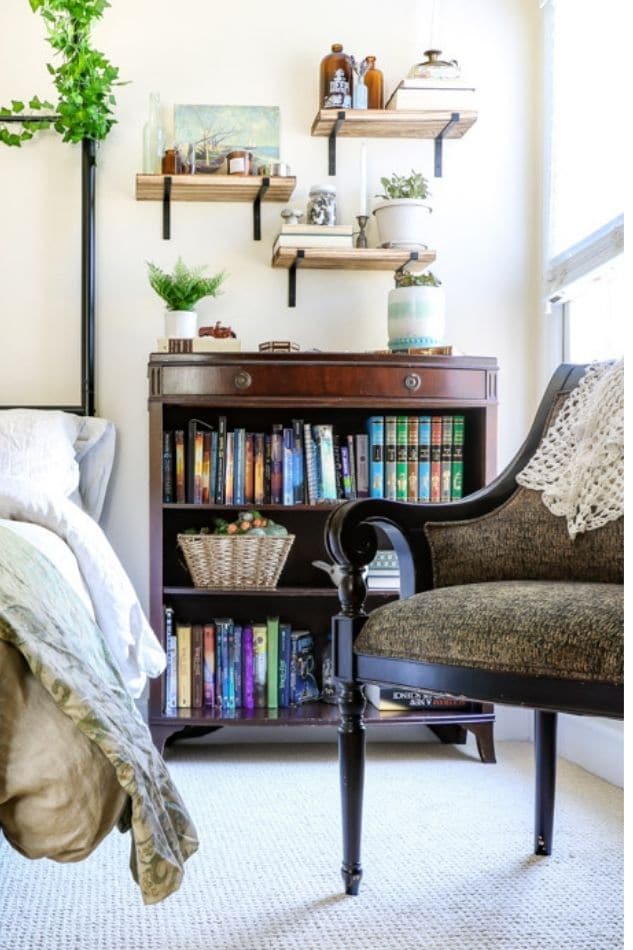
Notice how we place this dark wood bookcase next to a window with lots of direct sunlight. This helps seeing the accessories and books so much easier and looks aesthetically pleasing.
To see more photos of this bedroom, check out this Cottagecore bedroom.
LRV and Color Schemes
Design professionals also use LRV information to help make a cohesive color scheme. Using similar LRVs for your trim and walls will create a more uniform design. I used the same white on the walls and trim in my entryway.
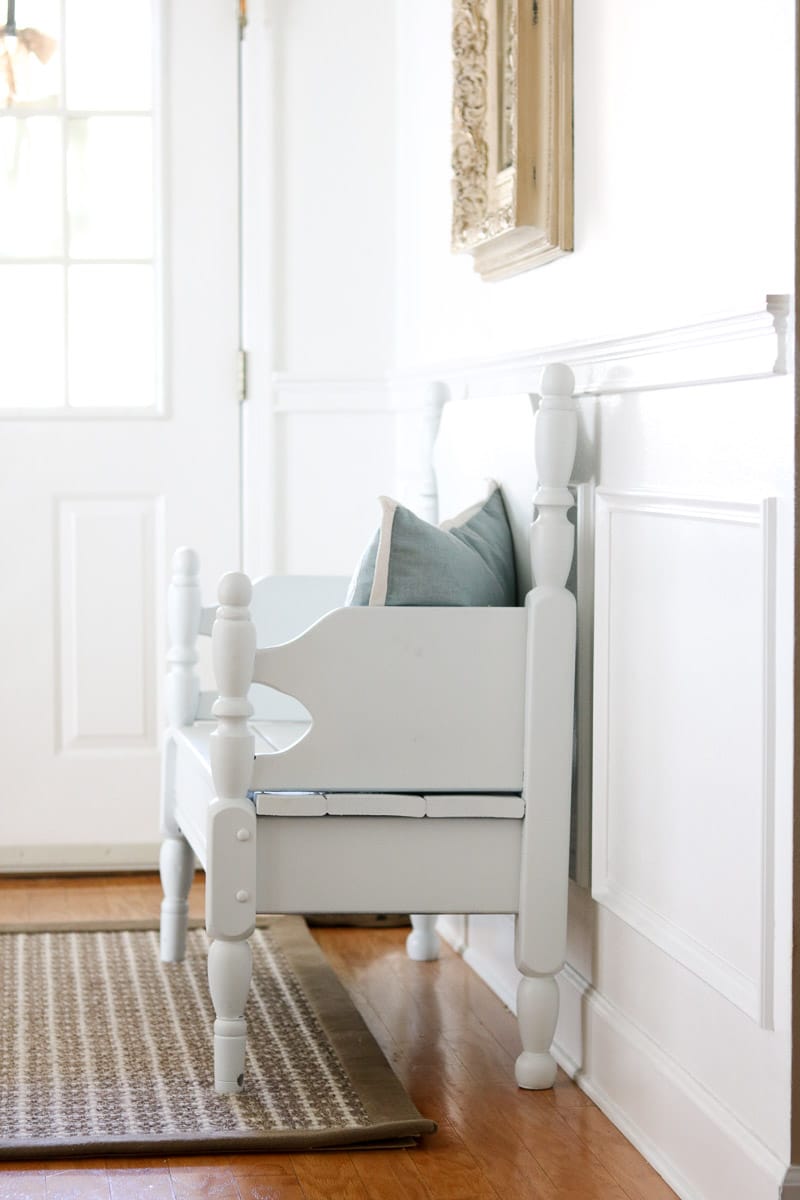
Using the same light paint color makes my walls and wainscot flow together, making the foyer feel more open. And it doesn't stop the eye from moving into other areas of the home, making it a great choice. However, if you love the contrast of colors, a wall with a wainscot is a great place to mix high and low LRV colors.
This works beautifully on accent walls too.
Here is an example of where we used an accent wall in a bedroom. It's painted Escape Gray by Sherwin Williams, an LRV of 40, and Alabaster walls of 82.

This is another example of working with smaller spaces with low ceilings and only one window. She wanted a cozy room, so we painted an accent wall to give her all the cozy feels without making the room feel dark. Adding white bedding and a light colored rug to brighten things up even more, all without tons of natural light.
See how understanding LRV can make selecting paint and everything else much easier?
To see more photos of this bedroom, check out this antique vintage aesthetic bedroom.
Conclusion
To wrap up this article on the LRV of paint. Remember, LRV (Light Reflectance Value) is a measurement used to determine the amount of light reflected by a surface. This value is important in the paint industry as it helps individuals select the right color for their space. Taking into account factors such as lighting and contrast will help you find the appropriate LRV.
By understanding LRV, you can make better-informed decisions about the paint you choose and create a visually appealing and functional space.
I hope this article has been helpful and will make selecting your next paint color much easier. Here are other articles on picking paint colors, including the most used colors. This is a great place to start when selecting paint for your interior and exterior.
- Popular Sherwin Williams Paint Colors
- Best Behr Beige Paint Colors
- Best Sherwin Williams Griege Paint Colors
- Best Behr White Paint Colors
- Best Behr Neutral Paint Colors
- Best Sage Green Paint Colors
Now I am curious what brought you here to learn about LRV? Are you picking a paint color for your home? If you're ready to buy your paint, check out these Behr options.
Share in the comments below.
Happy Decorating!
